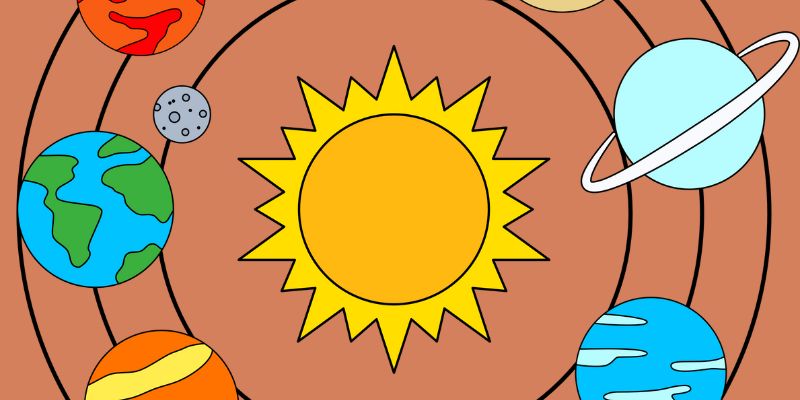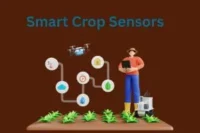How Smart Irrigation Helped Farmers Reclaim the Moroccan Desert
Published: 22 Apr 2025
In the Souss-Massa region of southern Morocco, farming has always been a battle against nature. Once nourished by seasonal rains, the land has become a victim of climate change—hotter days, longer droughts, and increasingly scarce water.
For Abdelhak El Mouden, a lifelong citrus farmer, it felt like watching his past vanish before his eyes. His family’s land, which had supported three generations, was no longer responding. The trees drooped, the soil cracked, and the wells dug deeper into silence.
“We watched the sky for signs, like our fathers did,” Abdelhak said. “But the sky was no longer watching us.”
So, guys, without wasting time, let’s jump into the article to learn How Smart Irrigation Helped Farmers Reclaim the Moroccan Desert
Years of Struggle
Abdelhak’s orchard once yielded enough clementines and pomegranates to support his entire extended family. But by 2017, crop production had dropped by more than half. Pumping water from underground aquifers became expensive and unreliable. He rationed water, sacrificed some trees, and cut labor—but still, losses mounted.
And he wasn’t alone. Across the Souss Valley, over 80% of smallholder farmers reported crop failures or drastic reductions in income. Young people were leaving in search of work. The desert, it seemed, was slowly winning.
Solar and Smart Irrigation
Then came something unexpected.
Through a collaboration between the Moroccan Ministry of Agriculture, international NGOs, and agritech companies, a pilot project introduced solar-powered drip irrigation systems with smart sensors to struggling farms in the region.

Abdelhak joined reluctantly—mostly out of desperation. He was given access to:
- Solar panels to power water pumps, cutting energy costs to zero.
- Drip irrigation lines to deliver water directly to tree roots, drastically reducing waste.
- IoT-based soil moisture sensors, connected to a smartphone app, that told him exactly when and how much to water.
- AI-powered forecasting, offering guidance on weather, evaporation, and irrigation timing.
He was trained in using the tools—none of which required formal education or advanced tech skills. The app used Arabic voice prompts, making it user-friendly even for older farmers.
The Transformation
The results were almost immediate.
In the first season alone:
- Abdelhak’s water usage dropped by 63%.
- His citrus yield increased by 40%.
- His fruit quality improved dramatically—fetching better prices at the local market.
He no longer guessed when to water or fertilize. The app told him. He didn’t need to pay for diesel or electricity—the sun powered it all.
“I didn’t just save money. I saved my land.”
Ripples Through the Region
Abdelhak became a local example. Neighboring farmers visited his orchard, curious about the transformation. Within two years, the cooperative he belonged to had helped install smart irrigation systems in over 1,200 farms across Souss-Massa.
More than just yields, the project helped:
- Reduce groundwater overuse, protecting future generations.
- Stabilize incomes, reducing migration to overcrowded cities.
- Empower women and young farmers, who were more willing to adopt the new systems.
The project aligned with Morocco’s Green Generation 2020–2030 Strategy, which focuses on sustainable farming, digitization, and resilience to climate stress.
Challenges Along the Way
Of course, the journey wasn’t perfect. Some farmers:
- Needed training and trust to adopt unfamiliar tech.
- Faced upfront costs (though mostly covered by grants or subsidies).
- Had limited mobile coverage in remote areas.
But slowly, communities adapted. And the blend of ancient farming knowledge with modern tools began to take root.
The Emotional Shift
For Abdelhak, the biggest change wasn’t just on the land—it was within him.
“Before, I felt helpless. Now, I feel in control. I no longer look up and wait. I look down at my phone, and I work.”
He recently helped his daughter open a small juice stand in town—selling produce from the very trees they once feared were dying.
Conclusion:
Morocco’s agricultural story is one of contrasts: tradition and innovation, scarcity and abundance, resilience and renewal. Through solar power, data, and farmer-led adaptation, even the harshest climates can become fertile again.
This is not just about oranges or drip lines. It’s about restoring dignity, reviving culture, and planting hope in dry ground.
References
In Morocco’s Souss-Massa region, smallholder farmers are transforming arid fields into thriving orchards by adopting solar-powered drip irrigation systems, significantly enhancing water efficiency and crop yields.”
Here is the Online source regarding How Smart Irrigation Helped Farmers Reclaim the Moroccan Desert
Author Name.
Giovanni De Feo
Exploring Irrigation and Water Supply Technologies for Smallholder Farmers in the Mediterranean Region

- Be Respectful
- Stay Relevant
- Stay Positive
- True Feedback
- Encourage Discussion
- Avoid Spamming
- No Fake News
- Don't Copy-Paste
- No Personal Attacks

- Be Respectful
- Stay Relevant
- Stay Positive
- True Feedback
- Encourage Discussion
- Avoid Spamming
- No Fake News
- Don't Copy-Paste
- No Personal Attacks





